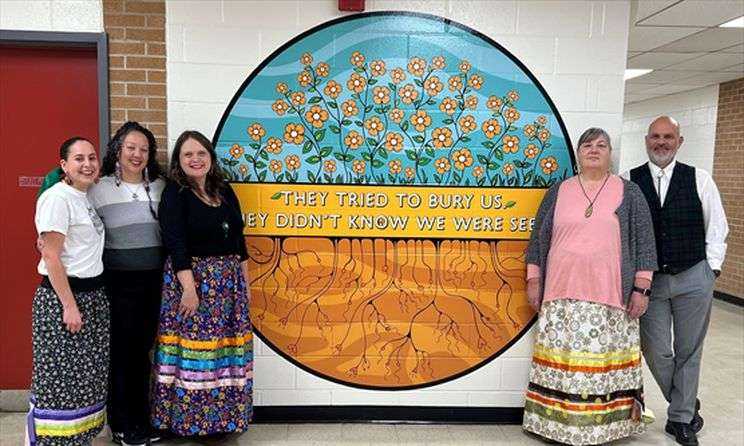BY PAUL JUNOR
On Tuesday, November 22nd, 2022, Peel School Board opened the Centre for Indigenous Excellence and Land-Based Learning. The announcement was made in a press release from the PDSB which indicates, “This event served as a milestone and a demonstration of the steadfast commitment towards reconciliation and paves the way for system transformation.” This introductory step is intended to set in motion the process in which staff and students will be identified to become part of the Centre which officially opened in September 2023.
The Centre was the result of a collaboration between the Indigenous Education Team, Treaty Partners, Indigenous communities in Peel as well as the PDSB. The space is expected to be utilized by many stakeholders who will take advantage of the rich learning experiences that will be afforded by this environment as well the benefits of Indigenous Ways of Knowing.
Nicole Reynolds, Coordinating Leader of Indigenous Education states, “We are thrilled to be able to welcome Indigenous students, families and community members to a space that honours their inherent rights to their culture. This is an exciting step the board is taking toward their commitment to reconciliation and educational sovereignty.”
The conception of this Centre is a direct reflection of the PDSB’s intention to transcend the requirements of the Ministerial Directives. It shows the board’s bold actions to ensure that it responds to the Truth and Reconciliation Commission (TRC) of Canada’s Calls to Action, as well as the agreement to the rights of Indigenous peoples as seen in the United Nations Declaration on the Rights of Indigenous Peoples, First Nation, Metis and Inuit students. They know first-hand the challenges, hurdles, obstacles and difficulties of gaining access to educational spaces in which they can thrive: mentally, emotionally and spiritually marked in inclusion, belonging, tolerance, acceptance and connection.
- The Centre will be able to serve multiple purposes which include the following:
- The worksite for the Indigenous Education Team
- A place to provide curricular learning grounded in anti-colonial practices, and Indigenous ways of knowing in classroom settings for Indigenous and non-Indigenous students
- An affinity space where Indigenous students can access cultural education
- Used as field centre for schools to access and receive experiential learning opportunities
- A space for capacity building and professional development for staff toward reconciliation
- A place to build partnerships and network with community and treaty partners
Rashmi Swarup, Director of Education for the PDSB writes in the press release, “I recognize that this work is long overdue. I look forward to working in solidarity with the Indigenous Education Team, treaty partners, and Peel’s Indigenous community to create a space that nurtures a sovereign approach to education.”
In a separate letter dated Tuesday, November 22nd, 2022, Director Swarup acknowledges,
“While work has been done across the system to recognize and celebrate Indigenous: heritage, knowledge and contributions, this venue brings all of this work together in a way that creates access for: First Nation, Metis and Inuit students to connect with: community, culture, tradition and languages and build relationships between Indigenous and non-Indigenous communities.
We must recognize, however, that these are initial steps in a larger journey that needs to focus on reconciliation through Truth and a deeper understanding of educational sovereignty.”
Anyone interested in learning about Peel District School Board’s program can check:
Website:https://www.peelschools.org
Twitter:@PeelSchools

